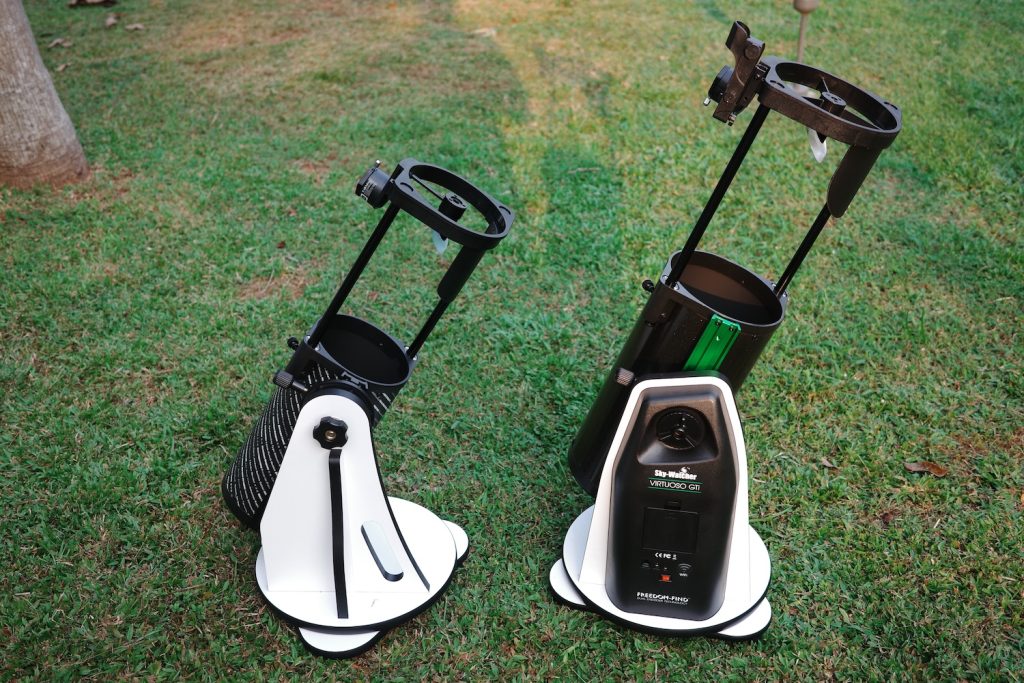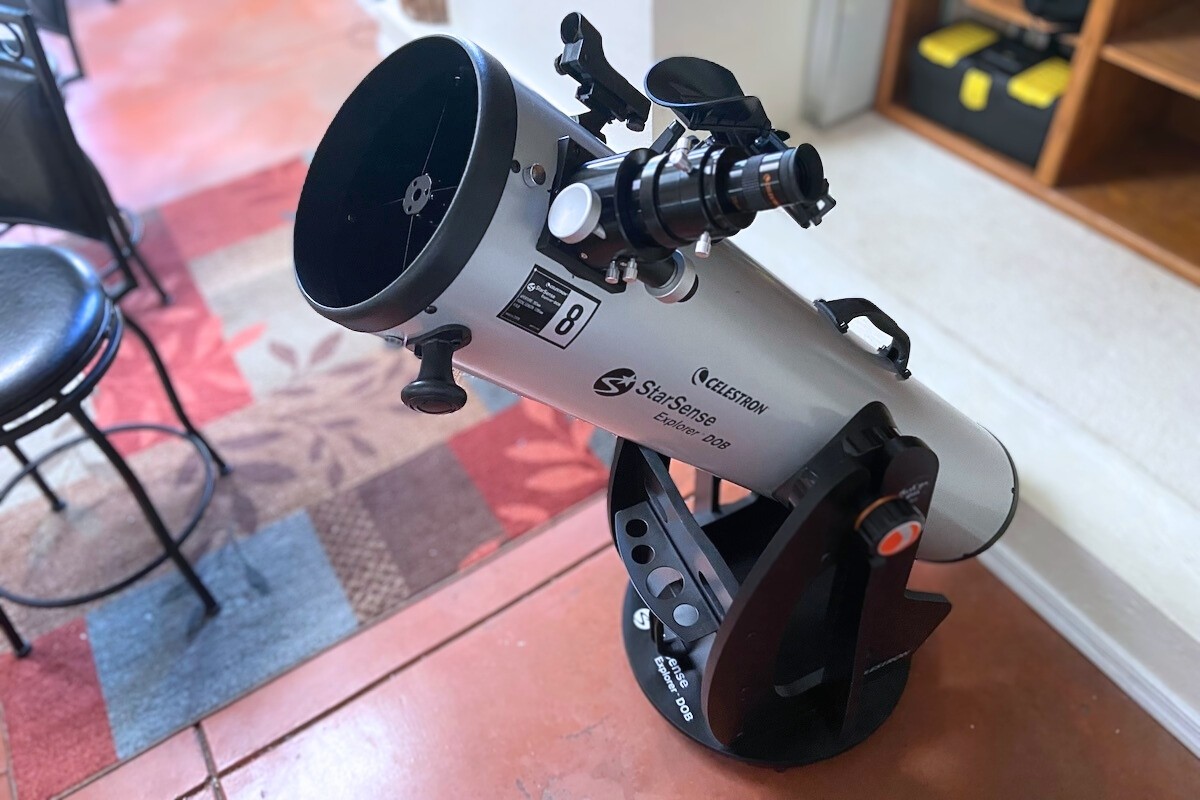Let me first tell you that most of the objects you can see in the sky with a telescope and an eyepiece are quite easy to find yourself.
Unless you have a fairly large budget, whatever you are spending on the hardware/software for buying/aiming a computerized or GoTo telescope that offers pointing aids is taking away from what would otherwise go to larger and more powerful telescope or additional accessories like good-quality eyepieces.
I agree that there are increasingly better deals on GoTo telescopes worth pursuing, but I’d never view any computer features provided with a telescope as the main selling point. I believe these should complement an already well-designed telescope that offers good performance for the price, such as the Virtuoso GTi 150P from Sky-Watcher, which is a computerized upgrade of their renowned Heritage 150P manual telescope.

Old-Tech Problems of Many Go-To Telescopes
GoTo telescopes are not new or particularly advanced technology. There is no “AI” powering GoTo. There is no “smart” system running it.
The systems that most GoTo mountings use today were developed in the late 1980s and run with less computing power than a calculator. The accuracy of many cheaper GoTo mounts is not much better than what the first mass-market GoTo telescopes offered in the 1990s.
- I’ve many times felt many GoTo mounts, excluding some of the newer ones, to be entirely “dumb.” These have no internal clock and require me, the user, to input all information on the time/date/location.
Newer GoTo telescopes that connect to my smartphone can pull the time/date/location information from that. But those that still use hand controllers do not even have an internal clock, even though this technology has now existed for nearly 40 years.
- Another facet of the relatively low-tech nature of most GoTo telescopes is that many cannot be aimed manually to some degree and have no ability to compensate if the telescope is bumped off target.
Some of the newer GoTo telescopes/mounts have encoders to handle manual adjustments, but most still do not, mostly to save on cost.
This ranges from simply lacking the ability to push the telescope around by hand without affecting the alignment of the mounting/software on the sky to literally not being able to adjust the telescope at all without power. This particularly obviates the convenience that GoTo offers since we’re forced to power the mount up and go through an entire alignment procedure, even if we just want a quick peek at the Moon on a partly cloudy evening.
A Better Compromise: PushTo Systems
A major factor to take into account is that with many telescopes, the added cost and weight of GoTo can make it much more difficult to make a financial decision or simply move around. That’s part of where PushTo comes in.
PushTo systems are passive devices that just tell us where the telescope is currently pointed and provide some sort of directional aid, like a GPS, to help us find objects in the night sky. They’re not for everyone, but for some folks, a PushTo telescope like one from the Celestron StarSense Explorer line might be a better choice than a full GoTo telescope.

PushTo systems are also completely optional. We can simply elect not to use them at all for the night or just switch from manually navigating to using the PushTo system to help out.
The Big Question: What Do You Get Back in Views?
The final and most important consideration of GoTo, or PushTo for that matter, is… what does it really have to offer at smaller apertures? The things we can see in the sky with a 6” or smaller telescope are all relatively easy to find without any electronic aid.
Smaller telescopes also tend to offer a wider field of view, which makes it easier to star-hop our way around the sky by hand. And under a light-polluted sky, there are fewer options for targets to see, while a dark sky makes it significantly easier to navigate by hand owing to there being more stars and even some deep-sky objects visible to the naked eye.
This is why I don’t recommend many of the smaller GoTo telescopes super highly in our rankings; they’re nice enough. But given the constraints and price of them, it is hard to justify it over a larger and more capable manual telescope or an optically identical telescope on a non-GoTo mounting that costs less.
You don’t need to be particularly quick or have good navigational skills to find your way around the sky with a manual telescope.
Basic charts and apps like Stellarium or SkySafari are all the “maps” you need, and with even a few months of experience, you can memorize how to find dozens of deep-sky objects in just a couple of minutes, or even seconds.
If You Still Consider GoTos Worthwhile
If GoTo is really for you, try to get a good GoTo telescope that is controlled via a smart device rather than an antiquated hand controller. I was incredibly frustrated by the hand controller that came with my first telescope; just the setup and alignment process was incredibly confusing, whereas newer app-based control systems walk you right through the process.
